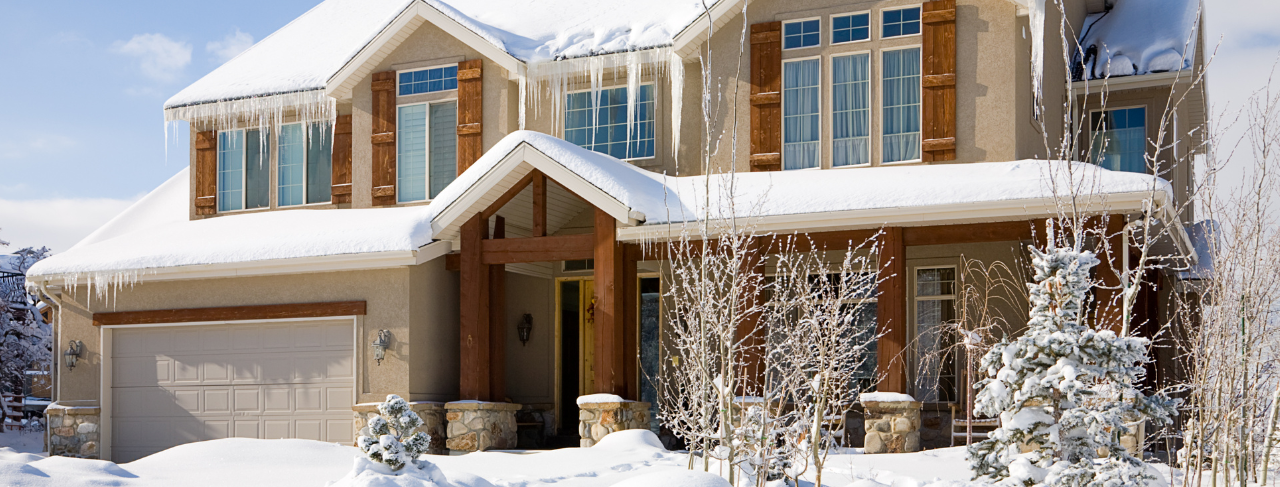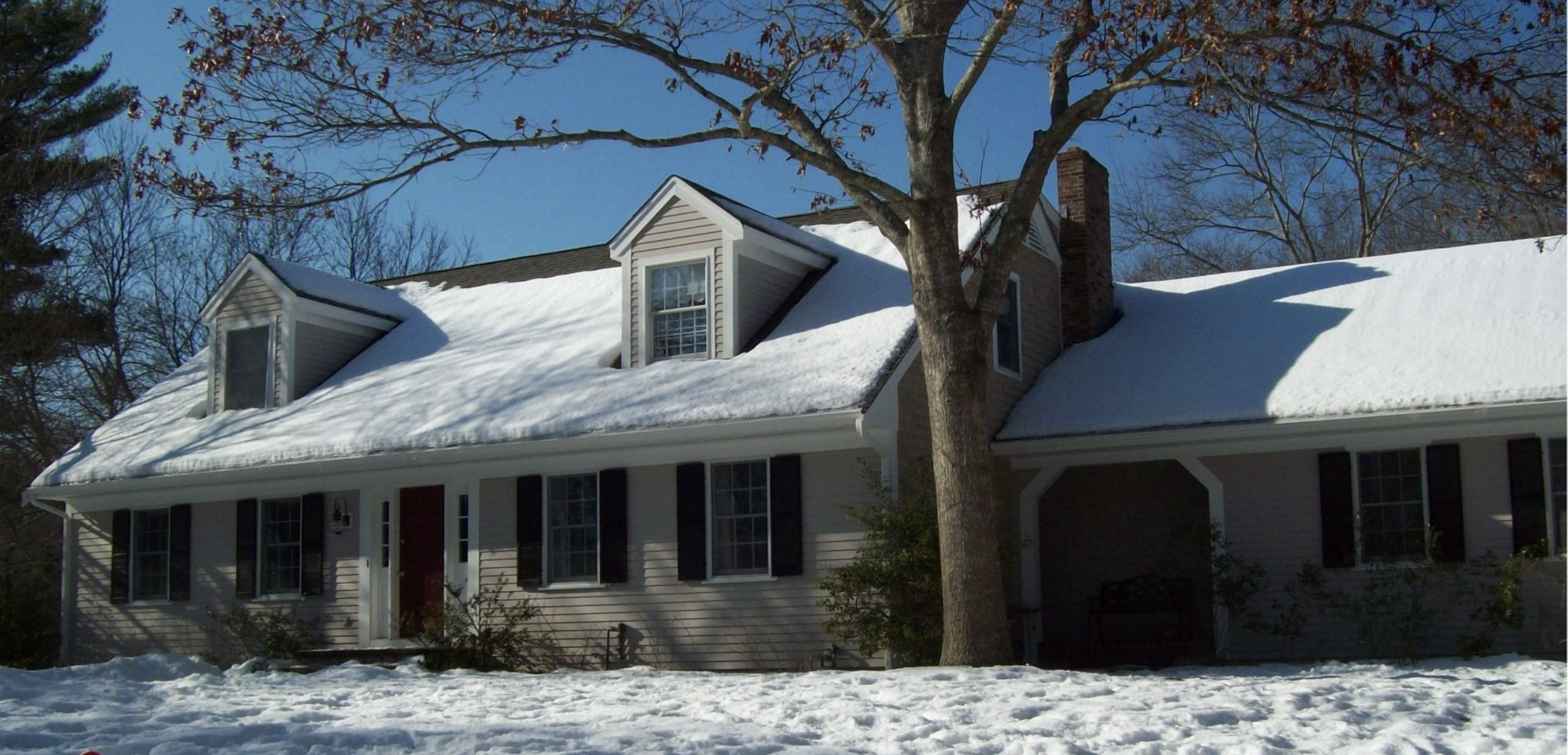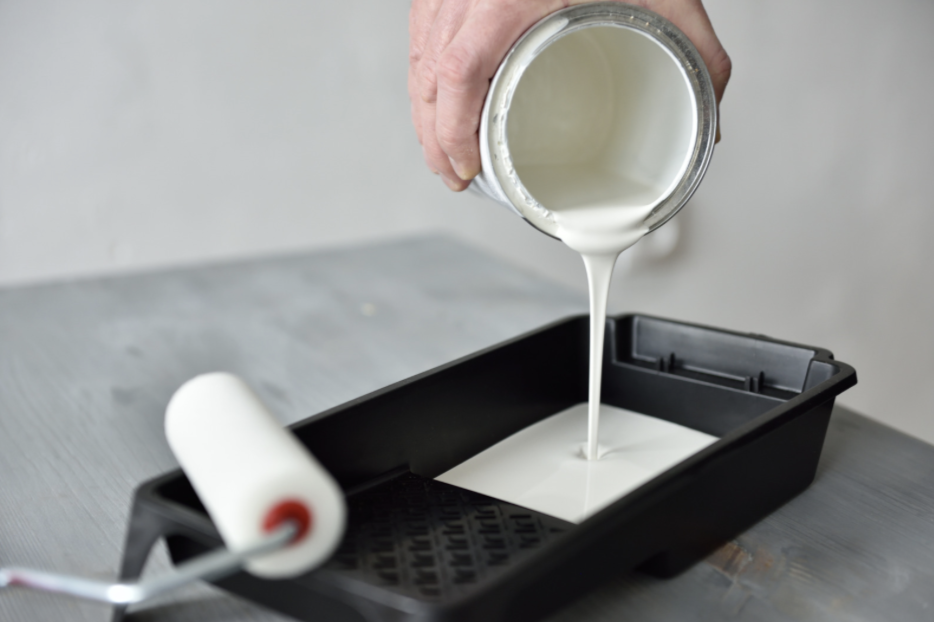
Can I Paint My Exterior in the Winter?
Posted on February 10, 2024
Exterior painting in cold weather:
Key Takeaways from this article:
- Cold Weather Painting Challenges: Painting in temperatures below 50°F is not recommended and often voids warranties due to risks like bubbling, blistering, and reduced durability.
- If you MUST paint in the wintertime: use cold-weather-rated paint, keep the paint inside and pour into try so it stays warm, ensure the surface is dry (test with a moisture meter), and paint during the warmest part of the day (10 a.m. – 3 p.m.).
- Be sure the air and surface temperature doesn’t fall below the paint’s lowest temperature threshold for 24 hours.
- Cold temperature painting risks: paint bubbling, blistering, reduced paint durability, and other problems when painting in cold temperatures.
- Moisture Awareness: Avoid painting wet surfaces and ensure conditions remain dry to prevent paint failure.
Painting the exterior of a home in cold temperatures (below 50 degrees ambient (air) temperature) is not advised and is something most professional painting contractors won’t warranty if they’re asked to do it.
 That said, there are times you MUST paint in colder weather, such as when an inspector is coming to your condominium or if you need to paint your home to sell it before the spring.
That said, there are times you MUST paint in colder weather, such as when an inspector is coming to your condominium or if you need to paint your home to sell it before the spring.
If you have to paint in the wintertime, here are our tips:
- Use a good-quality acrylic primer.
- Choose a paint that is formulated for cold weather (Emerald by Sherwin Williams and Woodscapes are both rated for 35 degrees). Check the paint can for temperature thresholds, or Google your paint formula to find out the recommended painting temperatures.
- Be sure that after you stop painting, the temperature does not fall below the paint’s coldest threshold for 24 hours.
- Both air temperatures and surface temperatures must stay above the temperature threshold of the paint.
- Make sure the paint dries before dew forms.
- Choose a time when there’s a warm stretch of weather. In our experience, February in New England often turns up 55-degree days. If you can find a stretch of warmer days, you will have a better chance of ending up with a durable painting job.
- Work when it’s warmest – In New England, this likely means between 10am and 3pm.
- Keep the paint can inside and pour paint directly into your tray in small amounts. This ensures the paint doesn’t get too cold while you’re working. Cold paint will thicken, which makes it harder to apply and more likely to peel and blister.
- If the paint gets cold, it tends to thicken, which is not ideal.
- Thick coats are more likely to peel, so while it’s tempting to apply thicker coats, thin ones have the best chance of lasting.
- Anything removable (like shutters) can be removed and painted inside.

The risks you take by painting in cold weather:
Here are a few of the problems you might see if you paint in cold weather:
- Bubbling
- Blistering
- Reduced durability
- Difficult application of the paint
- Mildew and mold growth if the surface was too wet to paint
- Paint separation
- Dripping
Don’t paint when the surface is wet:

Paint in covered areas for times when it’s too wet to paint outside. You should still test the covered areas with a moisture meter before painting. Make sure the surface is dry.
- Use a moisture meter to ensure that the surface is dry enough to paint. Different surfaces (concrete, wood, etc.) have different moisture thresholds. For example, a reading of 12%+ on a moisture meter would suggest that wood is too wet to paint.
- Air humidity extends drying times. It also suggests that rain is in the forecast. You’ll want to be sure you stop painting extra early to allow the paint to dry before the rain starts.
- An easy rule of thumb: if the pavement on your driveway or street is wet, your home is likely far too damp to paint. Once the pavement dries, you can start taking readings on your moisture meter. Vertical surfaces have gravity on their side to help them shed water, so the sides of your home will be drier long before your (horizontal) deck top will be.
- Save any covered overhang areas (covered porches etc.) for days when it might be drizzling.
- Luckily, if paint is going to fail, it usually does so quickly. Most times, bubbles will form underneath the paint, indicating that the surface was too wet when it was painted.
Painting inside in colder weather:
Painting your interior in the colder months is ideal for a number of reasons:
- The air tends to be dryer (less humid), and therefore, the paint will dry faster. This allows a second or third coat of paint to be applied quickly, usually on the same day. Painting inside in hot, humid weather increases drying time and often requires fans and air conditioning to help dry the surface enough to apply multiple coats of paint.
- Since they cannot paint exteriors, many painters experience a “winter slow season” and provide homeowners discounts in the winter on their regular interior rates. In the Northeast, this runs from about mid-November through March.






